Phoenix viral-video arrest puts focus on troubling police escalation incidents nationwide
Scrutiny grows over violent police encounters with the public.
Staring down the mayor of Phoenix and its police chief, 12-year-old Savannah Taylor made a confession to the city leaders after a viral cellphone video emerged of police officers screaming profanities and pointing guns at a black man, his pregnant fiancee and their two young children.
Savannah noted that police said the couple's 4-year-old daughter walked out of a Family Dollar store with a doll without paying for it, a seemingly innocuous act that escalated into a major confrontation and led to the girl's parents, Dravon Ames and Iesha Harper, being manhandled by officers and in fear for their lives.
"When I was little, I [have] done things like that," Savannah told the city leaders at an emergency community meeting on June 19. "My grandpa told me that my mom did that when she was little."
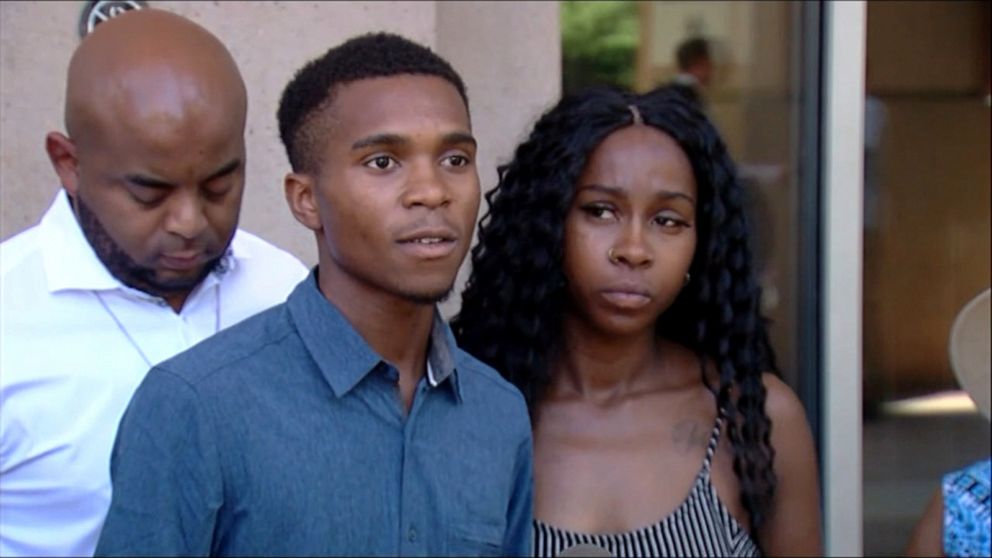
As many in the crowd of more than 2,600 chuckled, Savannah's voice turned serious.
"So, can you guys all imagine you guys as little kids doing that with your parents and then being pulled over by a police officer with guns pointed at your face and you're worried whether you're going to lose your life that day or not," the African American girl said. "It's sickening and it's sad. I'm shaking right now cause I can imagine that happening to me and my brother."
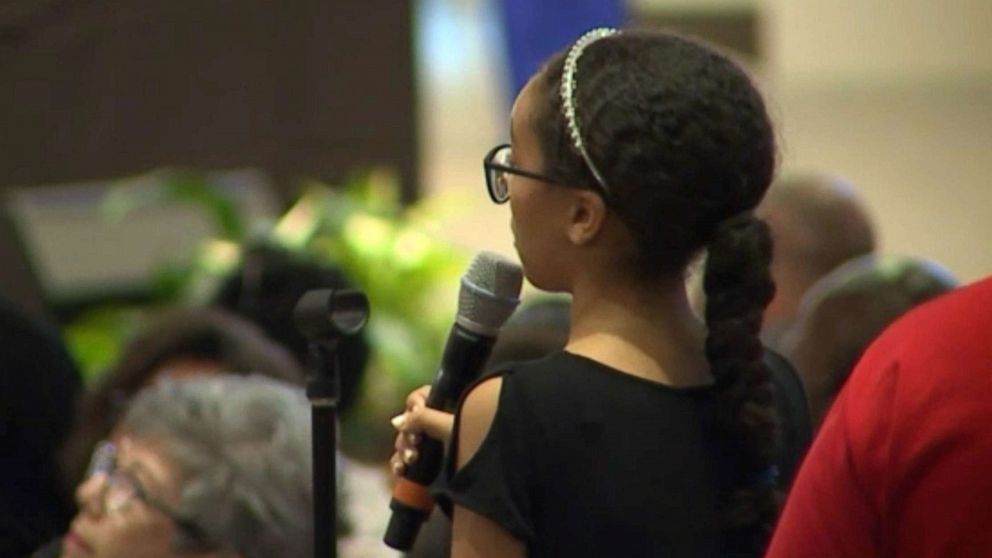
Phoenix incident mirrors national problem
The firestorm over the run-in in Phoenix is the latest in a string of encounters nationwide in which law enforcement officers have been recorded either by citizens with cellphones or their own body cameras engaged in behavior set off by relatively minor incidents.
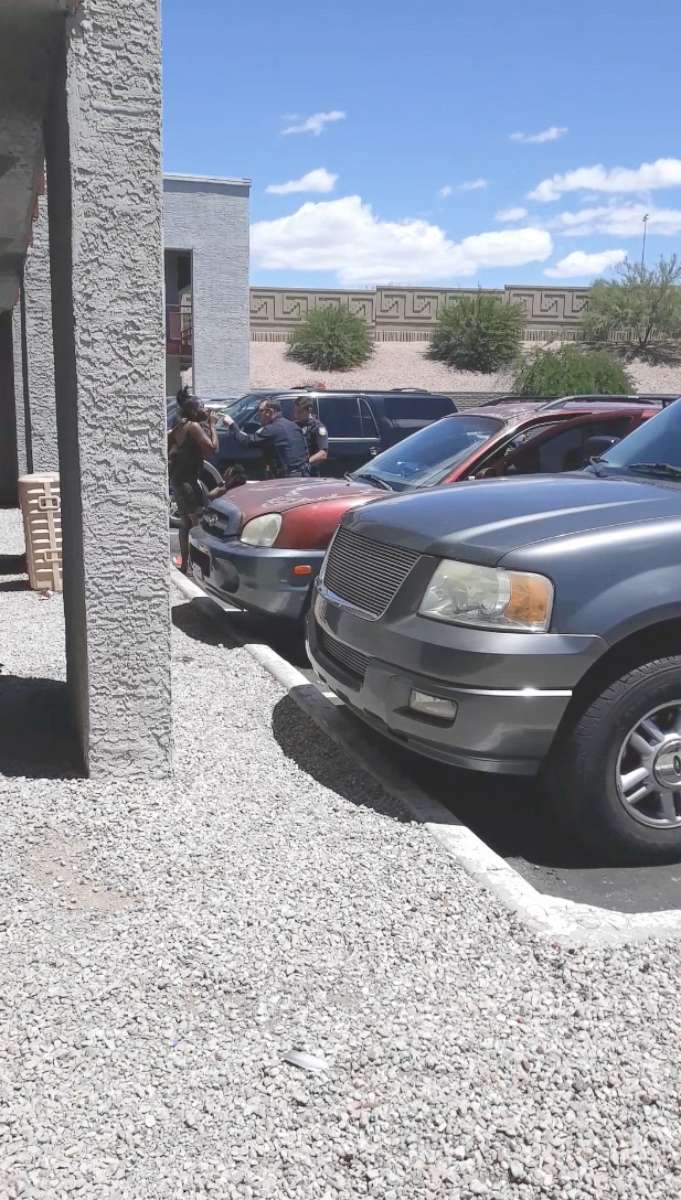
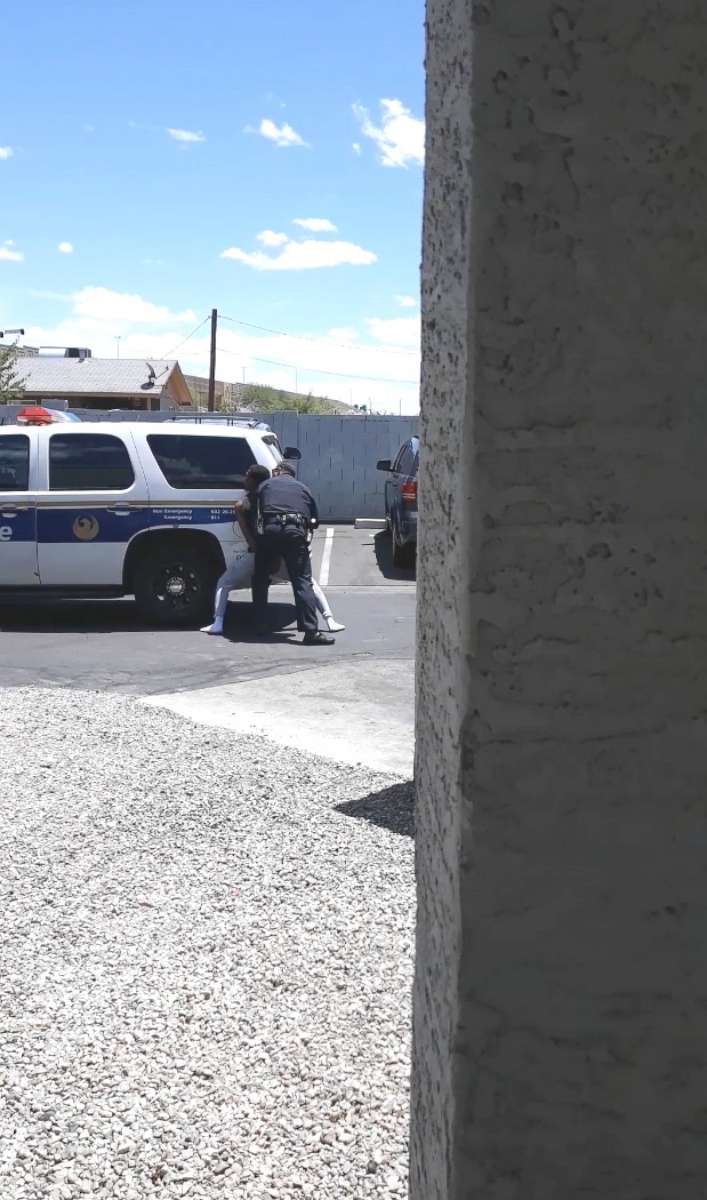
On March 1, a white police officer in Boulder, Colorado, was caught on cellphone video pulling a gun on a black man picking up trash in his own yard.
Four days later, a Miami-Dade officer was recorded pushing a black woman against a fence, grabbing her by the neck and throwing her to the ground after she called 911 to report a neighbor threatening her with a gun. The officer in that case was charged with battery and official misconduct and pleaded not guilty, according to court records.
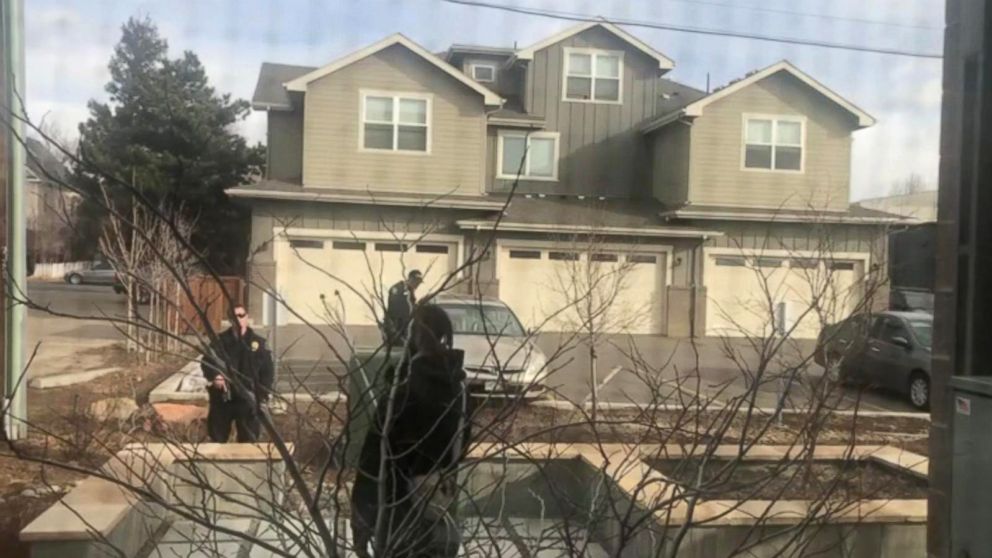
On May 4, a 65-year-old black woman was yanked out of her car in Alpharetta, Georgia, berated with profanities and arrested after she allegedly refused to sign a traffic ticket for driving into another lane.
And on April 29, Sacramento police were videotaped chasing down, handcuffing, and placing a "spit mask," over the head of a 12-year-old African-American boy after a security guard claimed he had been panhandling in front of a store.
Incidents involve white people too
Not all of the incidents have involved black people complaining about abuse at the hands of police.
On Jan. 27, 2018, a 30-year-old white man arrested on suspicion of assault died after a body camera video showed five sheriff's deputies wrestling, punching and deploying a stun gun on him in Auburn, Georgia, when he resisted getting out of a patrol car parked at the Barrow County Detention Center.
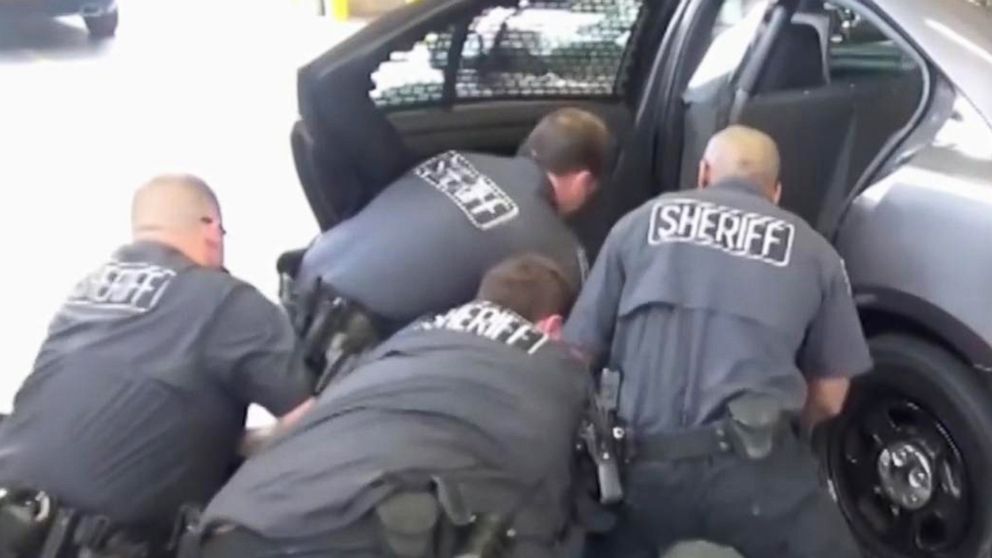
On July 26, 2017, a white nurse at a Salt Lake City hospital was arrested and forcibly pulled from her emergency room for refusing an officer's request to draw blood from an unconscious patient without a warrant.
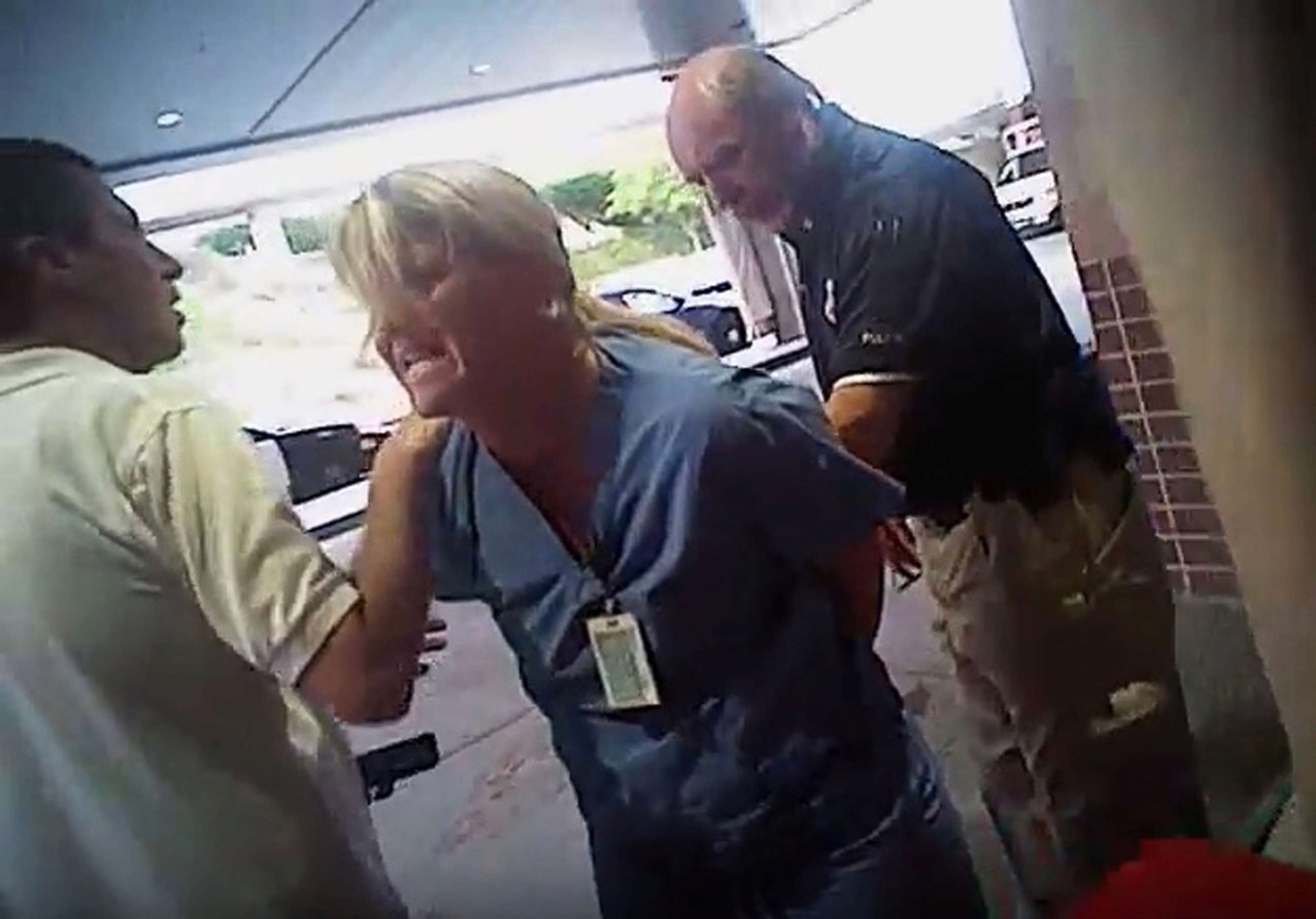
And on Aug. 10, 2018, Martha al-Bishara, an 85-year-old immigrant from Syria, was shot in the chest with a stun gun fired by police in Chatsworth, Georgia, when, according to her family, she didn't understand commands to put down a kitchen knife she was using to cut dandelions she intended to cook up.
"If they had calmed down, de-escalated the situation, listened a little bit, we wouldn't be having this issue right now. Unfortunately, that's not what happened," al-Bishara's grandson, Timothy Douhne, a 24-year-old medical student, told ABC News at the time.
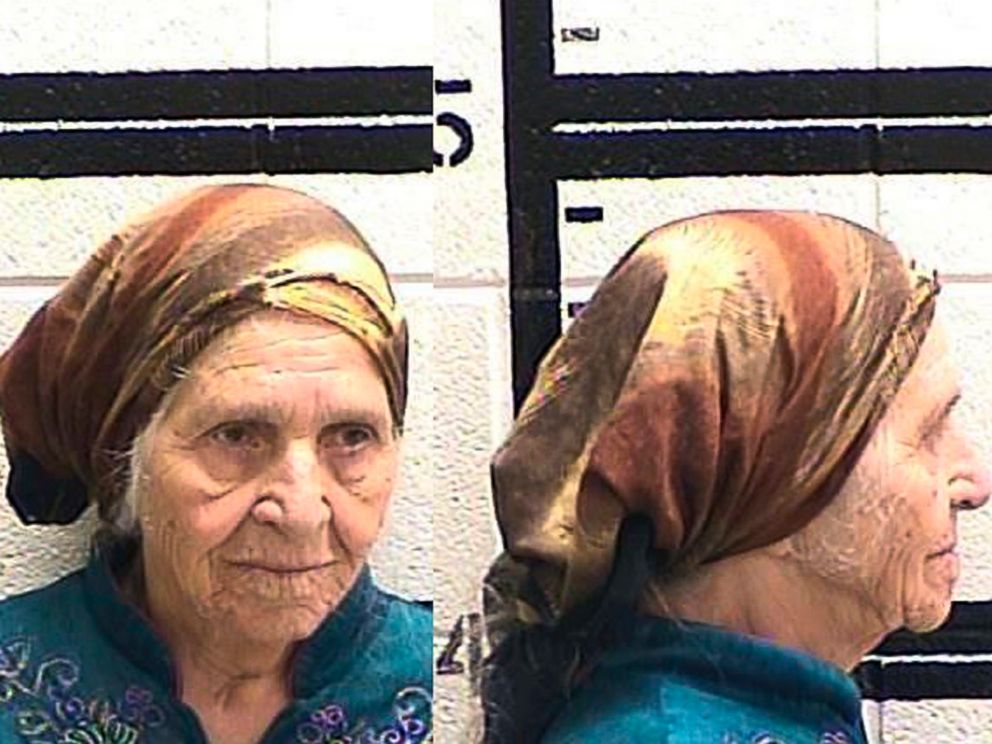
Questions about data and training
Experts have raised questions about the training police officers receive in the United States.
"I'm surprised that we don't have many, many more incidents of this nature on a daily basis ...," Maria "Maki" Haberfeld, a professor of police science at John Jay College of Criminal Justice in New York, told ABC News. "We have the shortest training in comparison to any democratic country."
She said some Scandinavian countries, including Finland and Sweden, require recruits to go to a four-year police university before they are assigned to departments. In the United States, the average police academy class lasts 21 weeks, according to the U.S. Department of Justice.
"Most departments are satisfied with a GED or a high school diploma," she said. "We have people who are trained in a very short, basic way that does not give them a fraction of the tools that they would need to have to police in a professional way. To me, it's irresponsible in a democratic society not to give police officers four years at a university."
Haberfeld said additional training on de-escalation and implicit bias, the unconscious act of stereotyping people based on race, generally comes after a scandal.
"There is some sort of high-profile event, and the next thing you know there's like a week of training in de-escalation. It's nonsense," Haberfeld said. "If you are told, 'OK, we have this scandal ... we're doing de-escalation training now,' of course everybody's sitting around rolling their eyes because it's punishment.
"It's not something that is best practices, it's not something that is grounded in empirical research of how policing should be conducted. It's just reaction to a scandal."
The Police Executive Research Forum, or PERF, a policy organization comprised of law enforcement executives from the nation's largest cities and counties, conducted a survey of U.S. police academies in 2015 and found that recruits were given about eight hours of training on each of the topics of de-escalation, crisis intervention, use-of-force policy and the use of electronic control weapons, specifically stun guns.
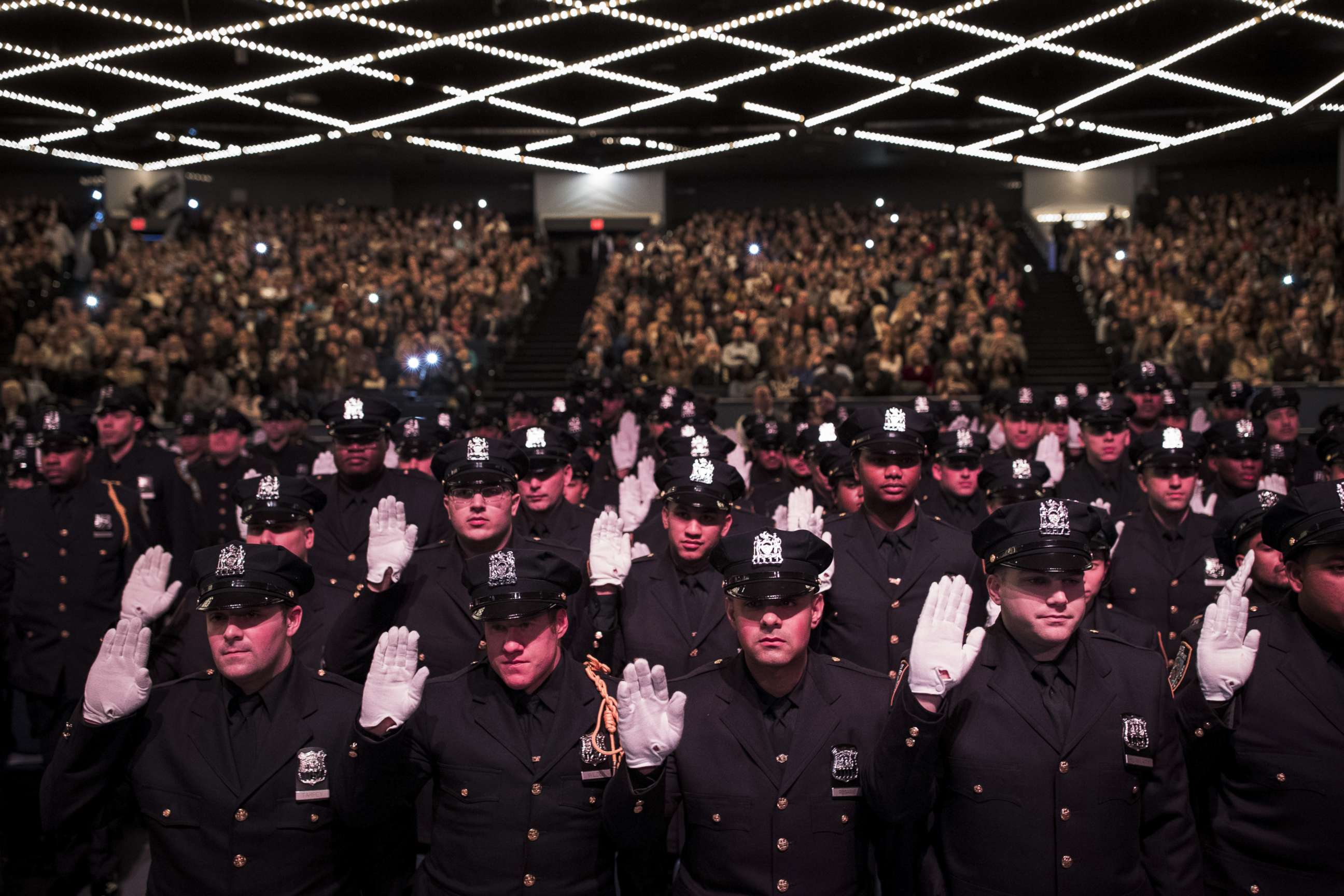
Meanwhile, recruits spent 58 hours on firearms training and another 49 hours on defensive tactics, the bulk of which is state-mandated. The DOJ, in its 2013 report, found a similar breakdown: Of the average 840 hours spent on police training, 21 hours were spent on use of force.
In its 2016 report on Guiding Principles of Use of Force, PERF acknowledged "no issue is of greater consequence to the policing profession, or to the communities we serve, than the issue of police use of force."
Determining the number of police escalations is tricky.
Data on use-of-force incidents by police, both in terms of shootings and other escalations, is "scant and incomplete," according to a federal government report on police use of force addressed to President Donald Trump in November 2018.
The paucity of information makes determining whether the incidents are increasing or decreasing difficult.
"The best available evidence reflects high rates of use of force nationally, and increased likelihood of police use of force against people of color, people with disabilities, LGBT people, people with mental health concerns, people with low incomes, and those at the intersections of these groups," the report says. This, combined with a lack of data, "lack of transparency about policies and practices in place governing use of force, and lack of accountability for noncompliance foster a perception that police use of force in communities of color and the disability community is unchecked, unlawful, and unsafe."
Chuck Wexler, executive director of PERF, echoed the sentiment about the perception of negative police interactions in the organization's guiding principles.
"American policing is at a critical juncture. Across the country, community members have been distressed by images of police officers using deadly force in questionable circumstances," he wrote. "These incidents are an infinitesimal fraction of the millions of interactions that take place between the police and the public every week."
Wexler added that "most police officers never fire their guns (except during training) throughout their entire careers, yet they face enormous challenges and risks to their own safety on a regular basis and they perform their jobs admirably."
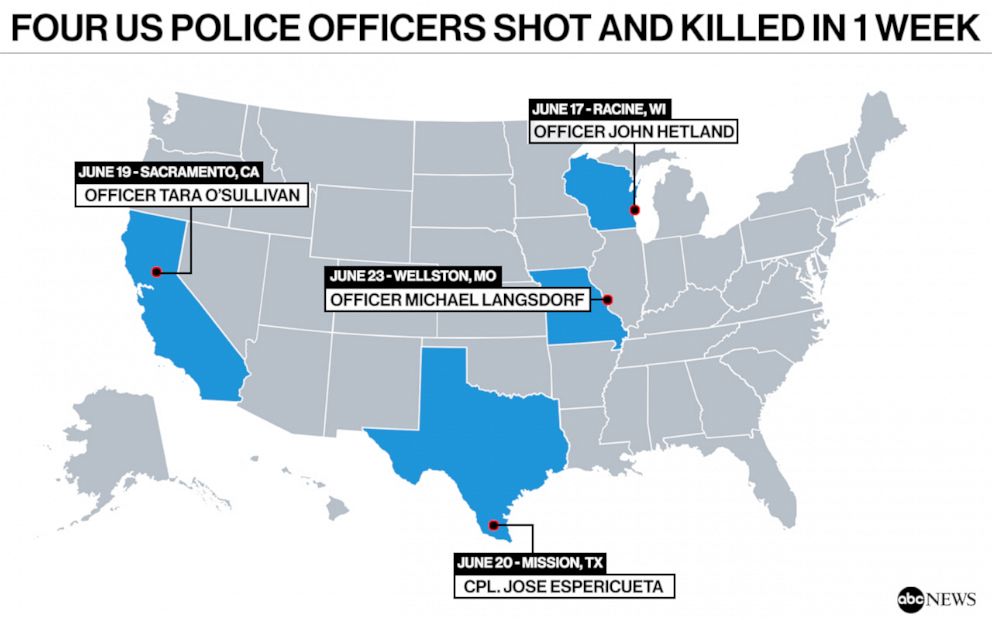
While the number of police escalations is unclear, there is data on race, policing and some aspects of the use of force.
The most current FBI stats show that police officers in the United States made more than 10.5 million arrests in 2017, mostly for drug and property crimes, and driving under the influence. Of the people arrested, 68.9% were white, while 27.2% were black or African American. (In July 2018, 76.5% of the population was white and 13% black or African American, according to Census data).
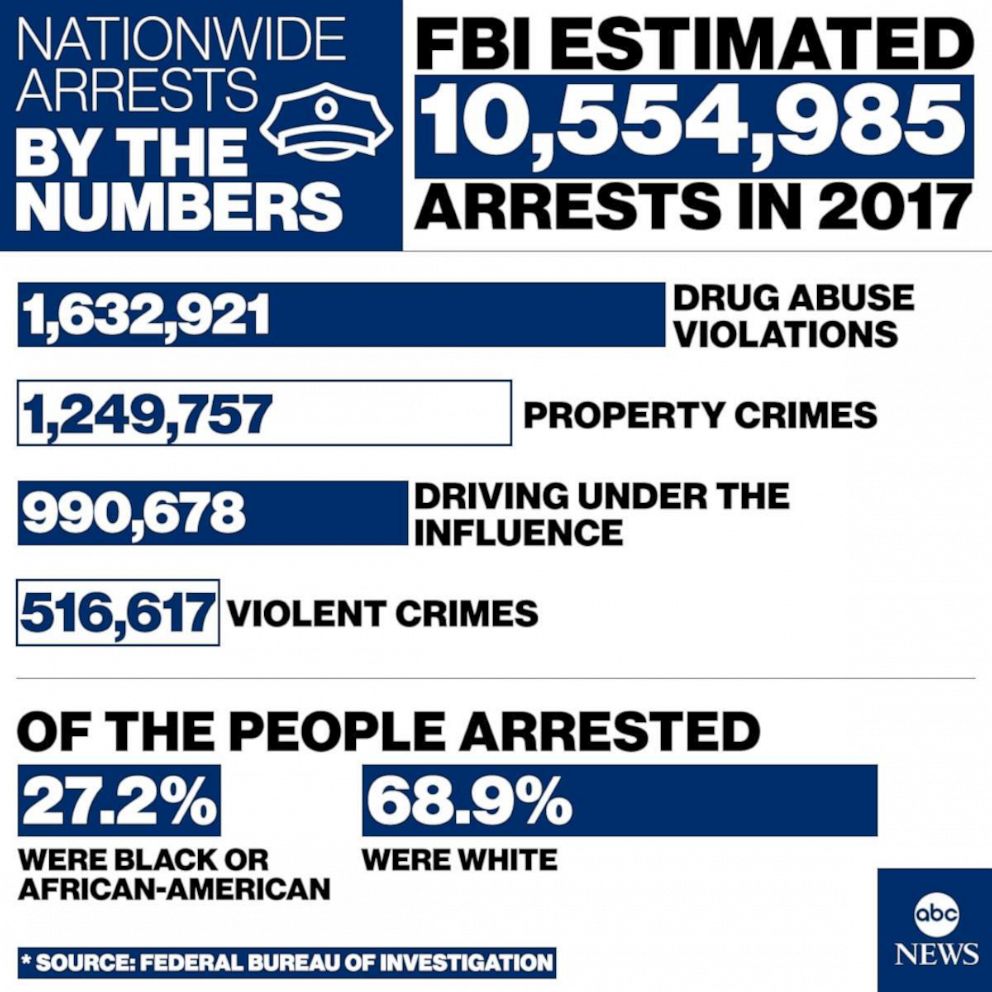
The Vera Institute of Justice, a New York-based nonprofit that advocates for criminal justice reform, reported earlier this year that black people remain 3.6 times more likely to be incarcerated in local jails nationally than white people. A 2017 study by the Education Week Research Center found that in 43 states and Washington D.C., black students were arrested at their schools at disproportionately high levels compared to white students. In 28 of the states, black students were arrested at school 10% to 20% more than whites, the study found.
And a study released this year by Stanford University's Open Policing Project found that black drivers were 20% more likely to be pulled over by police in routine traffic stops than white drivers.
The Washington Post database on police shootings, which the newspaper has kept close track of since 2015, shows that of the 992 people shot and killed by police in the United States in 2018, 772 were armed with guns, knives or using vehicles as weapons, while 47 were unarmed and 33 were wielding toy guns. The newspaper's data shows that 452 of the people killed were white, 229 were black and 164 were Hispanic.
Retired Wethersfield, Connecticut, police Lt. Kevin Dillon, who runs the police training program L.O.C.K.U.P. -- Law Officers, Combat, Kinetics, Unarmed and Panoply -- said that in the past decade he has instructed about 10,000 officers on the proper procedures for arresting and controlling suspects without needlessly escalating encounters into full-blown confrontations. But he said the overall training of police is inadequate.
"When it comes to training, I seriously still believe law enforcement is significantly undertrained," Dillon told ABC News. "Right now, the average police department maybe gives their officers four hours a year of physical or arrest control skills, maybe eight. So now you have lack of training to give them the skills they need to immediately control somebody, therefore, they're going to go back to primal fighting, which is fist punching in the face and stuff unless they're trained to overcome that.
"The same thing with de-escalation and communication, and implicit bias," he said. "We have to roll those out more on a continual basis, almost like professional development."
Dillon and other experts on policing said the lapses in the training of police are being manifested in numerous encounters like the one in Phoenix, prompting investigations, dismissals, criminal charges against officers and protests by people who have reached a boiling point.
Attempts at change
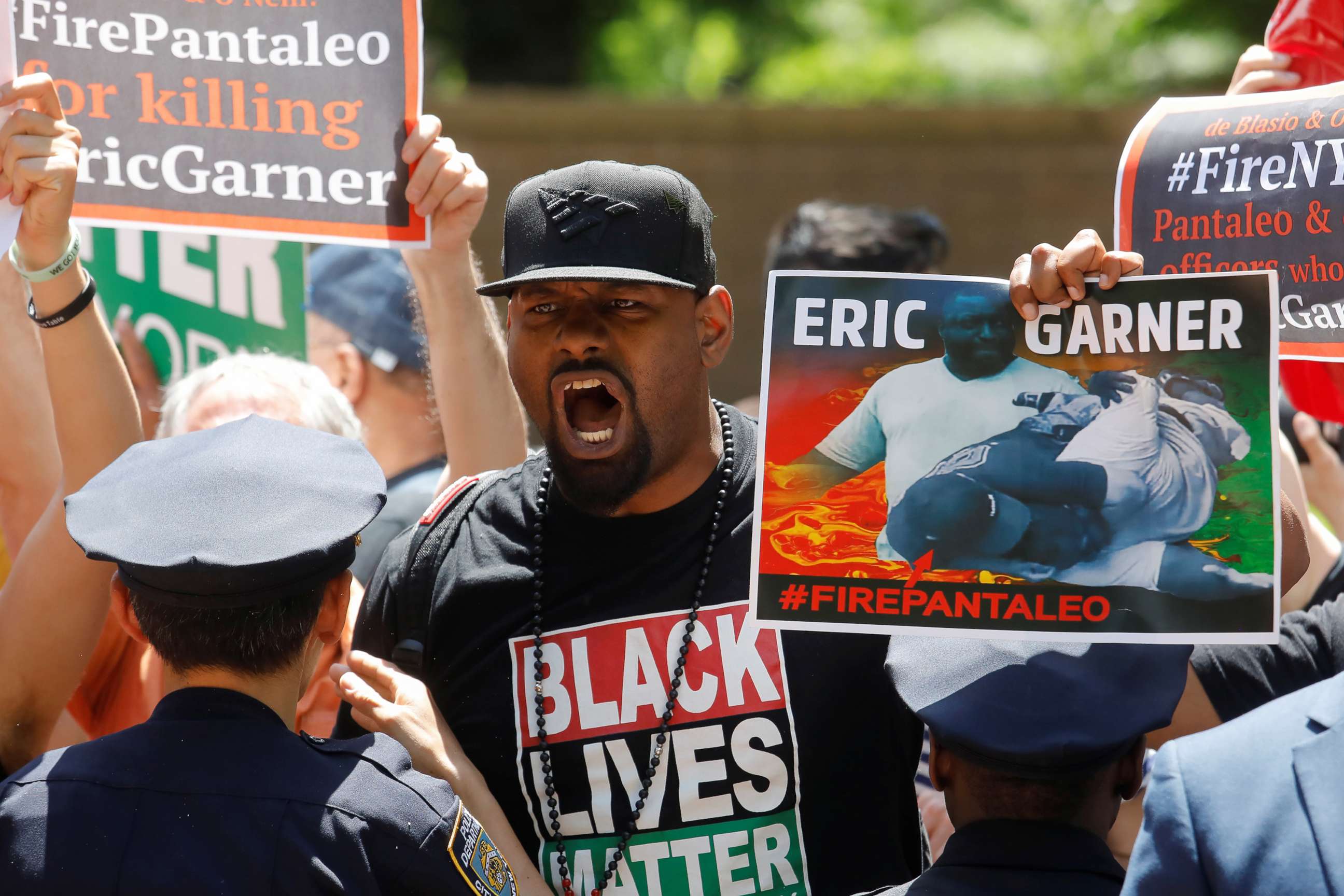
Focus on police escalations, and consequently de-escalations, gained steam over the past several years in the wake of a number of high-profile incidents such as the shooting death of Michael Brown and chokehold death of Eric Garner. Garner's case and others since have been caught on video, with many gaining attention on social media.
Rep. Tim Ryan, D-Ohio, a presidential hopeful, introduced legislation that would require de-escalation training for police departments. The measure, introduced in April, was backed by the Fraternal Order of Police and the NAACP.
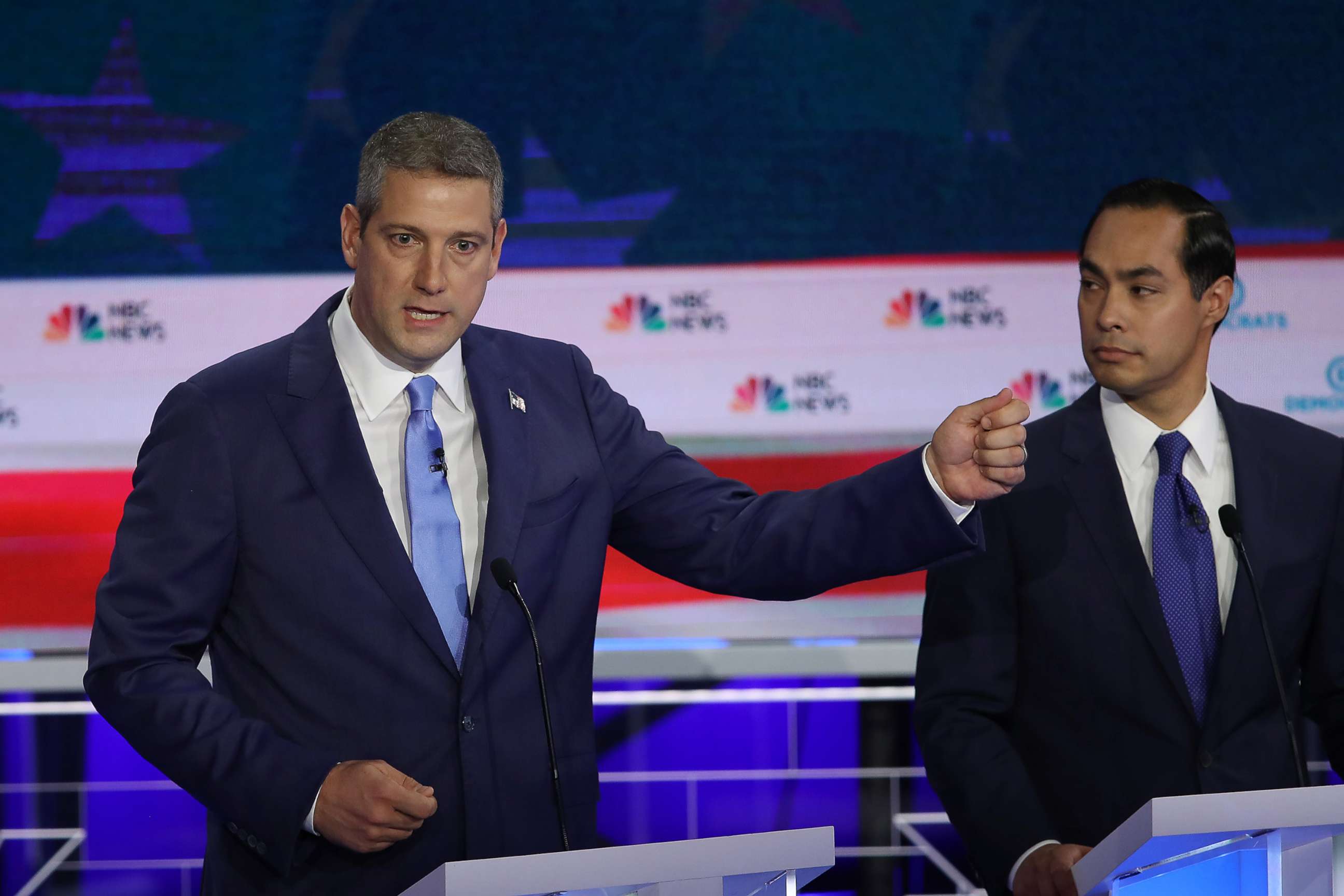
A number of departments around the country have de-escalation policies. Seattle, for instance, requires that "when safe and feasible under the totality of the circumstances, officers shall attempt to slow down or stabilize the situation so that more time, options and resources are available for incident resolution." The department began training its officers on de-escalation in 2014 in response to a consent decree "to address a pattern and practice of excessive use of force by Seattle Police Department officers," the U.S. Department of Justice said.
In 2011, the Department of Justice found that Seattle police officers used force "in an unconstitutional manner" 20% of the time, and that 57% of the times officers used batons it was "unnecessary or excessive."
The DOJ also found that Seattle officers "escalate situations and use unnecessary or excessive force when arresting individuals for minor offenses."
"This trend is pronounced in encounters with persons with mental illnesses or those under the influence of alcohol or drugs. This is problematic because SPD estimates that 70% of use of force encounters involve these populations," the DOJ report reads.
After reforms were put in place, a federal monitor overseeing the Seattle Police Department reported in April 2017 that overall use of force rates were down -- both over the past 28 months and compared to the DOJ investigation period of 2009 through 2011.
"Less-lethal instruments are used infrequently -- with baton use dramatically declining from the time period before and during DOJ's investigation," the federal monitor's report reads.
In 2018, Washington state, under Initiative 940, required that all officers in the state have violence de-escalation training.
Santa Monica, California, also has a de-escalation policy, and its manual states: "It is the policy of this Department that when all of the reasonably known circumstances indicate it is safe, prudent, and feasible to do so, an officer(s) shall attempt to slow down, reduce the intensity, or stabilize the situation so that more time, options and/or resources may become available for incident resolution."
And the New York Police Department last year instituted a $4.5 million training program that focused on implicit bias, "attitudes or stereotypes that can influence our beliefs, actions and decisions, even though we're not consciously aware of them and don't express those beliefs verbally to ourselves or others."
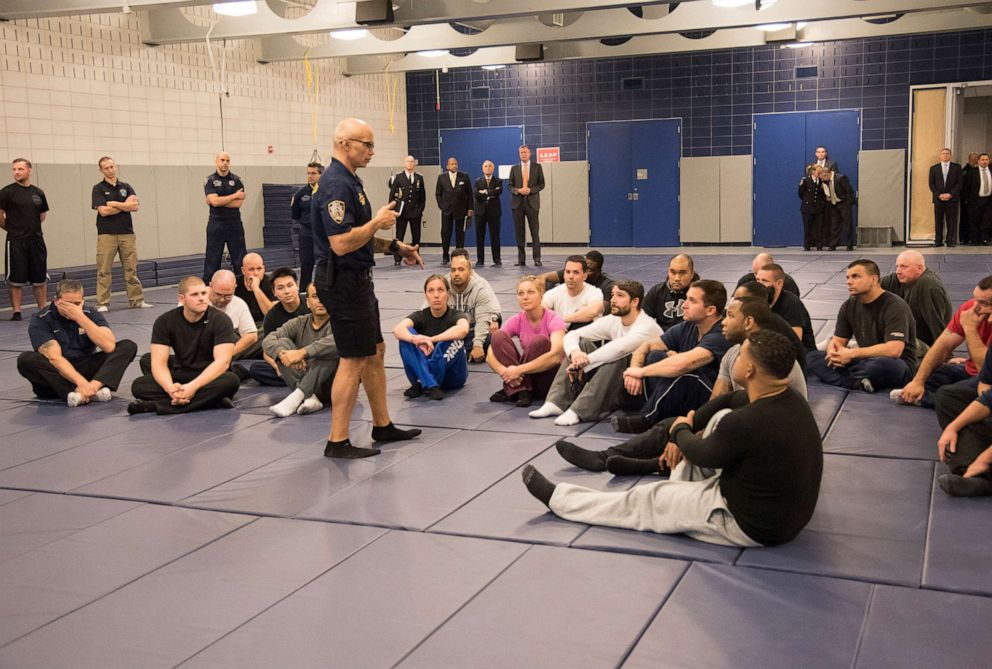
One of the methods that departments have adopted over the years to attempt to control the number of police shootings and escalations is a use-of-force continuum, which prescribes appropriate levels of force for different situations.
For instance, in a hypothetical use-of-force continuum from the National Institute of Justice, just the mere presence of an officer is "considered the best way to resolve a situation." After that comes verbalization, starting calm and then potentially increasing in volume, with commands such as "stop."
The continuum cycles through "empty-hand control," "less-lethal methods" and finally, as a last resort, "lethal force."
According to the federal National Institute of Justice, as of 2016 80% of agencies use a continuum in their use of force policies, prescribing appropriate levels of force for different situations.
The Police Executive Research Forum said that's necessary to "challenge conventional thinking on police use of force."
"The preservation of life has always been at the heart of American policing," it added. "Refocusing on that core ideal has never been more important than it is right now."
Specifically, PERF recommends focusing on cases of people with mental illness or those without guns and emphasizes a "critical decision-making model" designed to "train officers how to think more critically about their response to various types of situations."
Interestingly, PERF argues that rigid models such as the use-of-force continuum, the "21-foot rule" -- approximately the distance an adult male can cover before an officer can shoot -- and adages like "we need to draw a line in the sand" can lead to unnecessary consequences.
De-escalation in action
A number of officers have been lauded for showing restraint in the field in recent years, despite threatening situations. For instance, NYPD transit officer Syed Ali did not pull his gun despite being confronted by a group of men in the subway in 2018.
"Life is precious, and going to that weapon is not the first thing we should be thinking about," Ali, who served in the Army, said at the time. "I've been in situations where weapons were used, especially in combat and patrols, and what we're taught is don't go immediately to what you think might happen. Take a second, even the slightest second, and think about it."
An officer in Kentucky, Jesse Kidder, a Marine combat veteran, chose not to fire his weapon at a charging murder suspect who was reportedly saying "shoot me." "Law enforcement officers all across the nation have to deal with split-second decisions that mean life or death. I wanted to be absolutely sure before I used deadly force," Kidder said.
And in Philadelphia, dozens of officers were reportedly given awards for defusing tense situations.
But the results of de-escalation and implicit bias training are not entirely clear. Police shootings in Utah dropped after reforms were instituted in 2015, but there were 19 people shot in 2018, according to The Salt Lake Tribune. And in a study in Police Chief magazine, the official publication of the International Association of Police Chiefs, the authors contend that "no empirical evidence exists on the impact of implicit bias training on officer decision-making in the field."
Increased awareness, but incidents still dominate headlines
Just days before video of the Phoenix incident went viral, more than 30 police officers in Memphis, Tennessee, were injured when rocks were hurled at them by community residents protesting the fatal shooting by U.S. Marshals of a black man wanted on attempted murder charges.
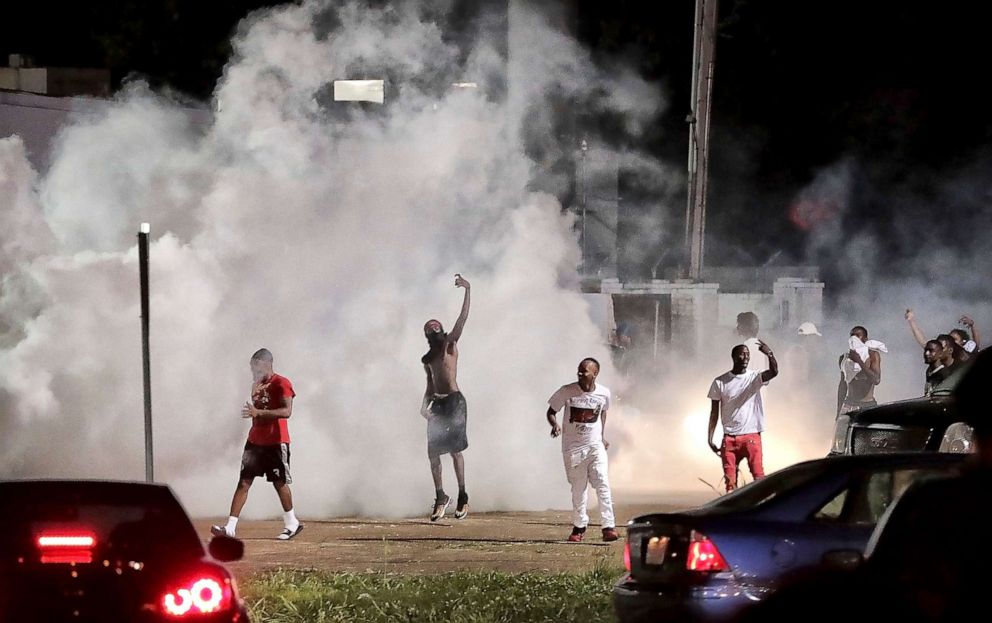
The unrest appeared to take authorities aback and resulted in them scrambling to calm the community by explaining that the fugitive had allegedly shot a man multiple times in Hernando, Mississippi, earlier this month and stolen the victim's car. Memphis police also said that when cornered, Brandon Webber rammed the stolen car into the marshals' vehicles, then took off running with a gun in his hand.
Webber's shooting followed three controversial police-involved shootings in Memphis, over the past year, of black men after traffic stops spiraled into the use of lethal force. Two of those men died, and one, Martavious Banks, was wounded. Police said Banks, 25, was pulled over on Sept. 17, 2018, by police for undisclosed reasons, but during the stop he suddenly drove off, prompting a chase and eventual shooting.
Like the majority of incidents across the country, there was no video of Banks' shooting. An internal police investigation found that the officers involved in the shooting had either turned off their body cameras and dashboard cameras or failed to activate them. While all the officers involved in the shooting were cleared by the Shelby County District Attorney General Amy Weirich last month, the officer who shot Banks resigned and three others involved in the chase were placed on unpaid suspensions for violating department policy on the use of body cameras.
Duane T. Loynes Sr., an assistant professor of urban studies and Africana studies at Rhodes College in Memphis, said he believes the angry protest over the police shooting of Webber stemmed from a growing mistrust of police.
"It's not like they're acting violently against peace, they're responding to the violence that they experience on an ongoing basis," Loynes told ABC News.
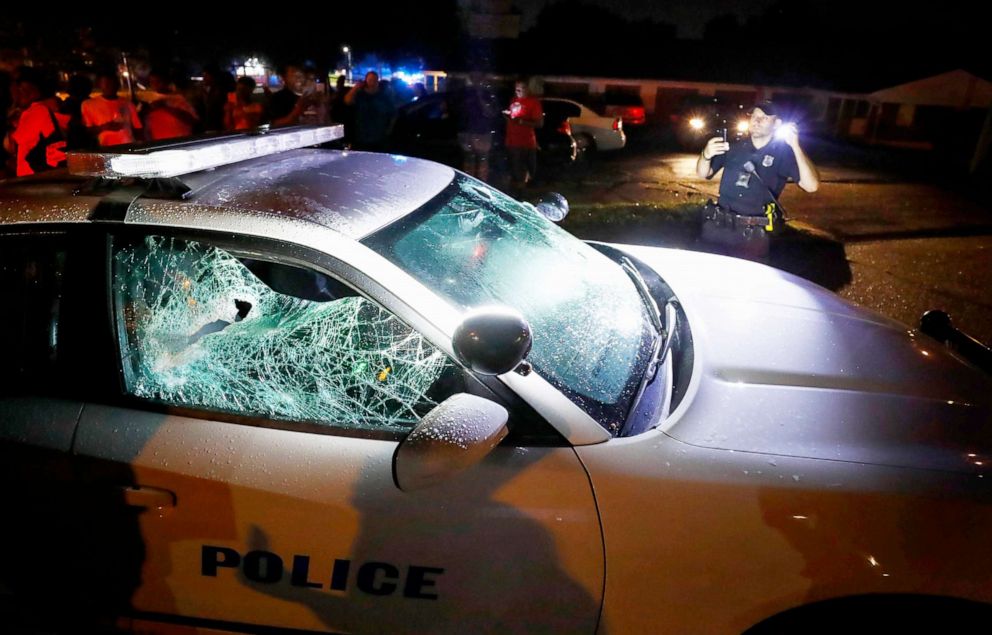
He said many cities have sought to diversify police forces, thinking it could improve community relations by hiring officers who reflect local demographics.
"It's not about individuals, it's about a system, and it really doesn't matter who's plugged into that system," said Loynes, who has received an Andrew W. Mellon Foundation Grant to study the relationship between black communities and law enforcement. "If the system itself is problematic, you're going to get the same outcome. In fact, when you have black police officers you're still going to get them engaging in pretty hostile actions toward their own black citizens."
On Aug. 11, 2018, a black Baltimore police officer was recorded on cellphone and police body camera video repeatedly punching 26-year-old Dashawn McGrier, who is black, fracturing the man's jaw and inflicting injuries to his nose, ribs and eye socket. Officer Arthur Williams, 26, resigned when authorities opened a criminal investigation.
Williams was convicted of assault earlier this month, according to The Baltimore Sun.
The incident apparently occurred when Williams questioned McGier, who had a previous unpleasant encounter with Williams, according to what his lawyer told ABC News. The video showed McGier telling Williams, "So what? Don't touch me" before the officer attacked him.
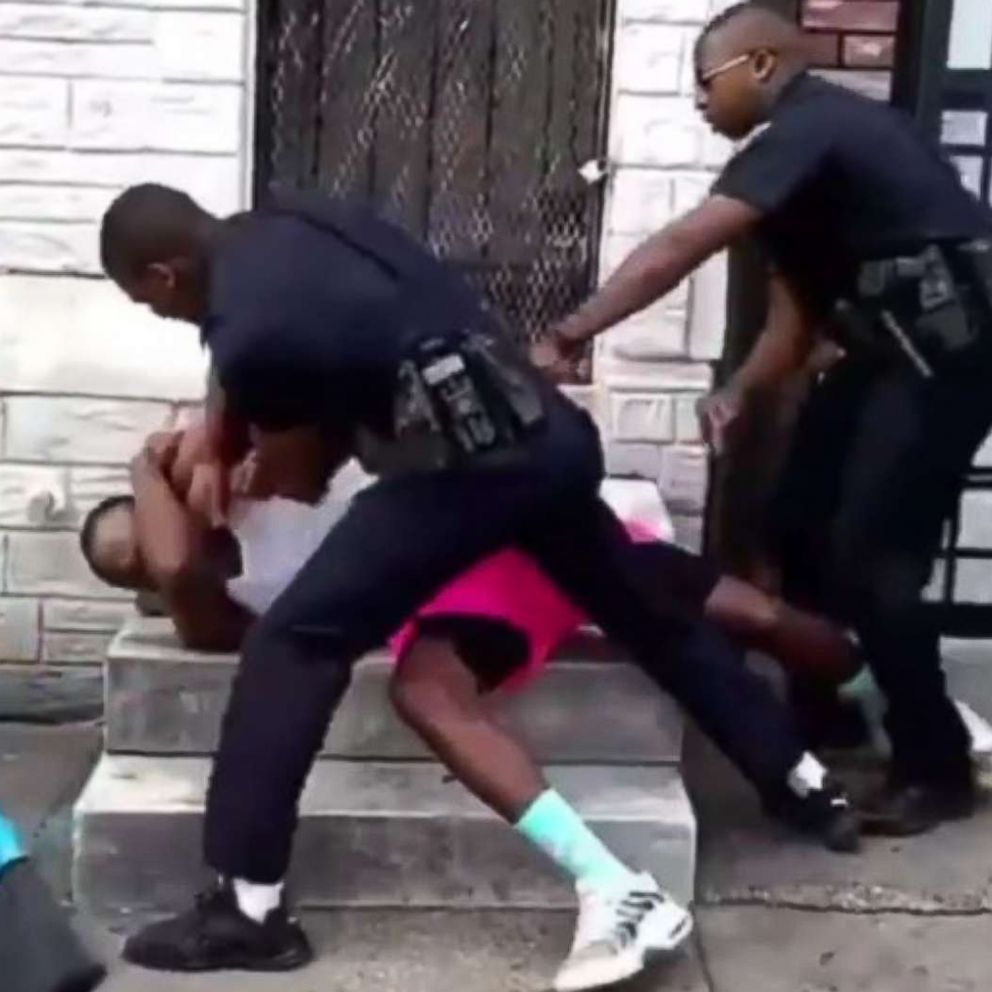
On Aug. 1, a veteran African American Detroit police officer was caught on cellphone video beating an apparently emotionally disturbed naked woman at a hospital after she struggled with him, spat on him, and allegedly tried to bite him, officials said.
The officer, 47-year-old Dewayne Jones, was immediately suspended and convicted in March of misdemeanor assault, according to the Wayne County District Attorney's office.
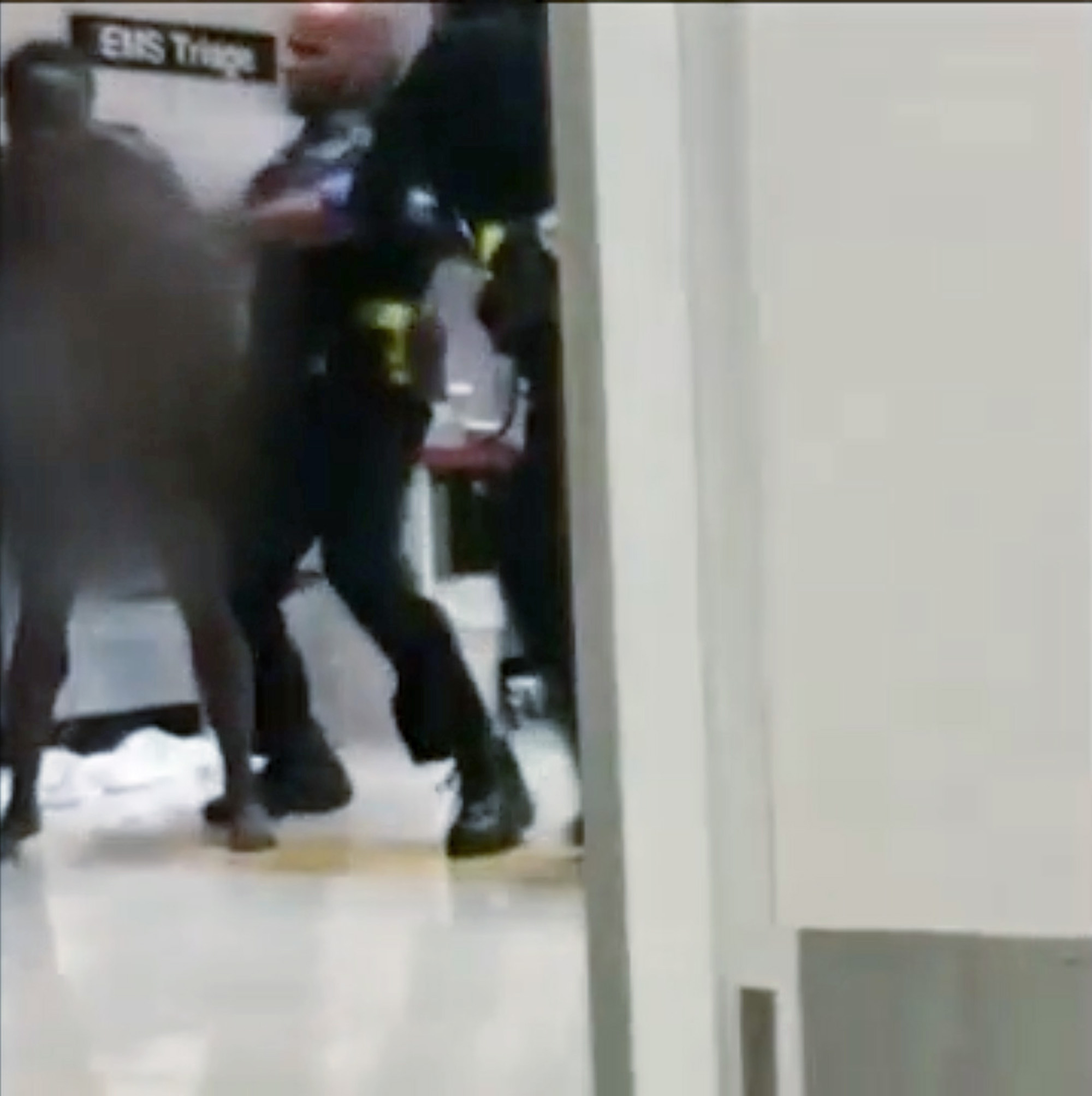
Such incidents have also put a focus on how police deal with emotionally disturbed individuals they encounter. A promising new pilot program in Chicago is being hailed as a potentially groundbreaking new tool that uses virtual reality to help police better understand how to handle a subject who is in the midst of psychiatric distress.
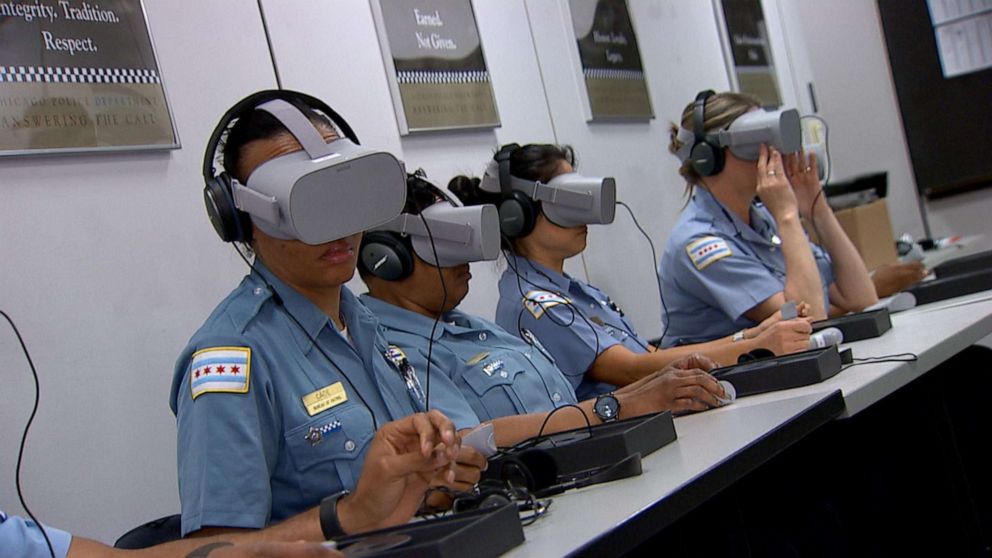
Loynes contends the incidents caught on video are just a "microcosm" of the scores of episodes that occur in small towns and large municipalities each year that fly under the radar due to lack of visual evidence.
Here are some other incidents ABC News has reported on in the past year that were supported by video and prompted probes and protests:
'Unnecessary' force used
A white Atlanta police sergeant was fired in May after a cellphone video surfaced showing him allegedly yanking a black woman from her car, slamming her to the ground, punching her in the face and deploying a stun gun on her during an arrest in front of her 4-year-old daughter.
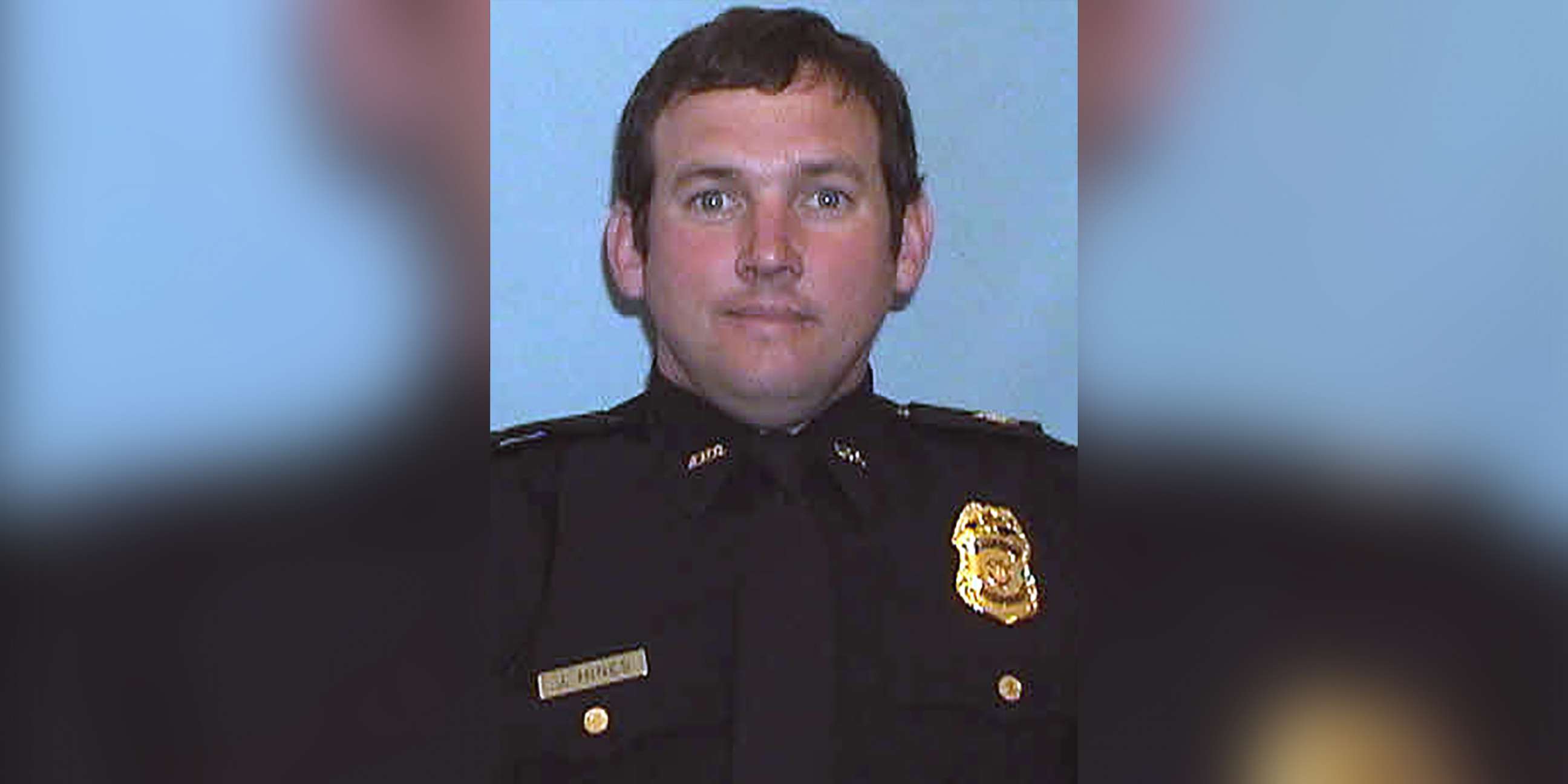
All charges against the woman, Maggie Thomas, were dropped after the video of the incident surfaced. The woman and her attorney had both called for Sgt. James Hines to be fired.
In a statement released to ABC News, Atlanta police officials said they were made aware of the incident on May 10, and launched an investigation that led to the sergeant's dismissal and a recommendation from the police to prosecutors to drop the charges against Thomas.
Thomas said she was just sitting in her car in the parking lot of her apartment complex when Hines approached her and began grilling her about who owned the car and warning her not to drive the vehicle because it was not insured. Hines wrote in his report, which was released by officials, that Thomas became "agitated" and told him, "There shouldn't be a white officer harassing her," and asked for the name of his supervisor.
He left, but then almost immediately went back when he learned Thomas had an alleged warrant for failing to appear in court for a speeding ticket. In the second encounter, the situation escalated into the violent arrest caught on cell-phone video.
"Following its investigation, the Office of Professional Standards determined that the force used during the arrest was unnecessary and inconsistent with Atlanta Police Department training. Subsequently, Sergeant Hines was dismissed from employment on May 17, 2019," police officials said in a statement.
All over a Crock-Pot
A dispute between former friends on Aug. 17 over a borrowed Crock-Pot led to a confrontation at a backyard barbecue in Michigan in which police deployed a stun gun on a father as he held his 2-month-old baby, an incident recorded by a witness in a cellphone video that went viral.
Ray Brown, 33, was shot with a stun gun multiple times and arrested on suspicion of a slew of charges, including resisting arrest, neglect of a minor and assault and battery of a police officer in the incident in the Detroit suburb of Westland, police said.
"When the man knew he was going to be arrested, he grabbed the child from another person's arms. The man was told several times by the officers and the baby's mother to give the baby back to her, but he refused," Westland Police Chief Jeff Jedrusik said during a news conference shortly after the incident.
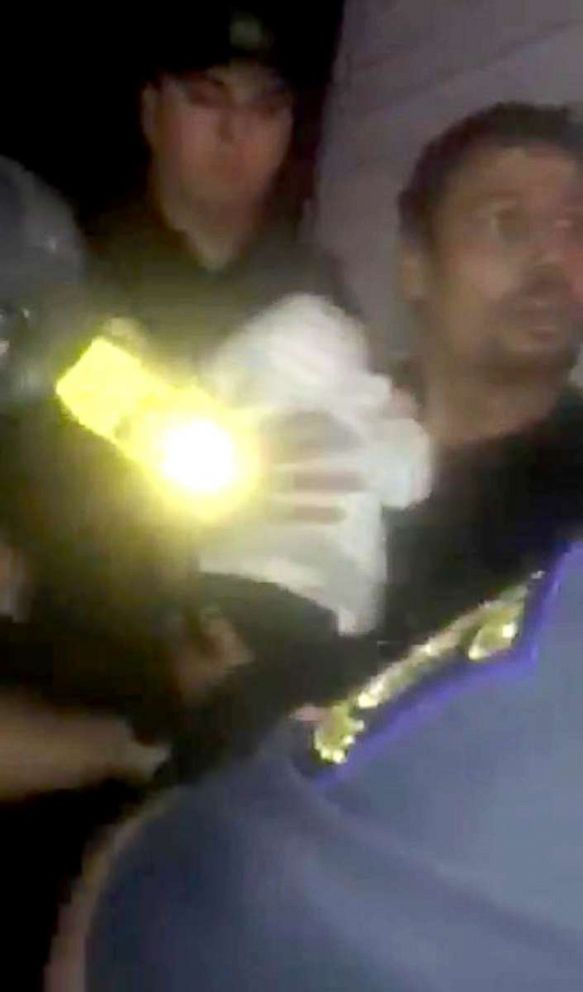
"The officers indicated in their report that the man was aggressive and was gripping the child so tightly that they feared the man might actually be hurting the child," he said.
Jedrusik said the officers were left with limited options and in the quickly escalating episode, chose to deploy a stun gun.
But the baby boy's mother, Nicole Skidmore, 28, told ABC News at the time that police deployed the stun gun on Brown at least three times and handcuffed him once they had him on the ground.
"I think they were way out of line," Skidmore said. "They could have handled the situation differently because my son was in his arms. They didn't care about my son."
Baby ripped from mom's arms
New York City police officers and two city Human Resources Administration officer came under fire in December 2018 after a "troubling" video surfaced showing them ripping a baby from the arms of a mother who had waited at a social services office for hours seeking help, police and the woman's relatives said.
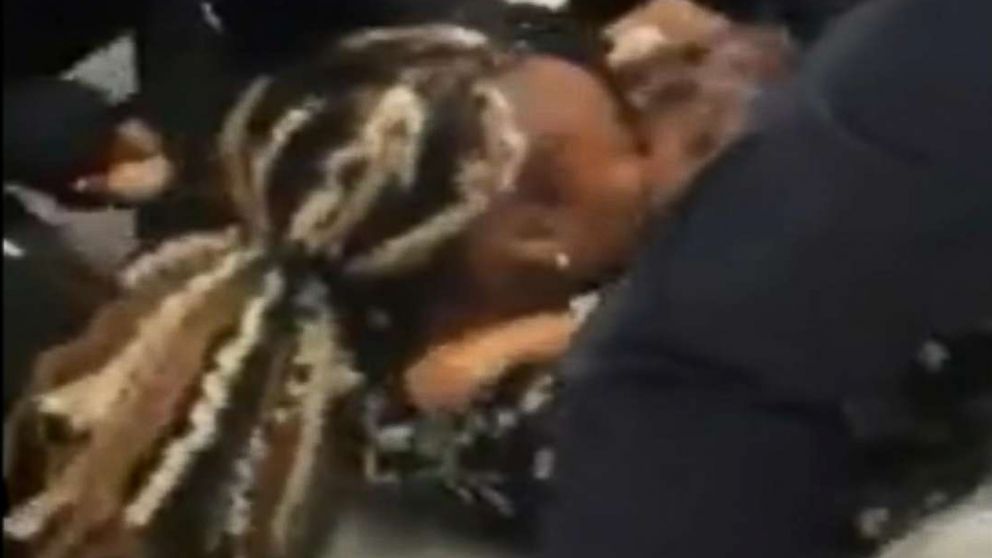
Jazmine Headley, 23, said she was arrested when she ignored orders to get up from the floor, where she was sitting because she couldn't find an empty seat. Headley was charged with resisting arrest, committing an act in a manner injurious to a child, criminal trespass and obstruction of governmental administration, according to the NYPD. All charges were eventually dropped.
In February, city HRA Commissioner Steven Banks said one of the HRA officers involved in the arrest resigned, and another is in the process of being terminated. An internal NYPD probe found no wrongdoing on the part of the officers.
Headley was later released from Rikers Island jail after the video of the incidents emerged and city politicians, including Brooklyn Borough President Eric Adams, a former New York City cop, demanded an investigation.
Banks said in a statement that he had ordered officers and staff to undergo refresher de-escalation training to "better" diffuse situations "before the NYPD is called for assistance."
Headley testified before the New York City Council in February, asking that reforms be made so no one else will endure what she went through.
"It's not just the fact that I was arrested," Headley told the council. "It was the harsh way that I was treated by people who are supposed to help me."



